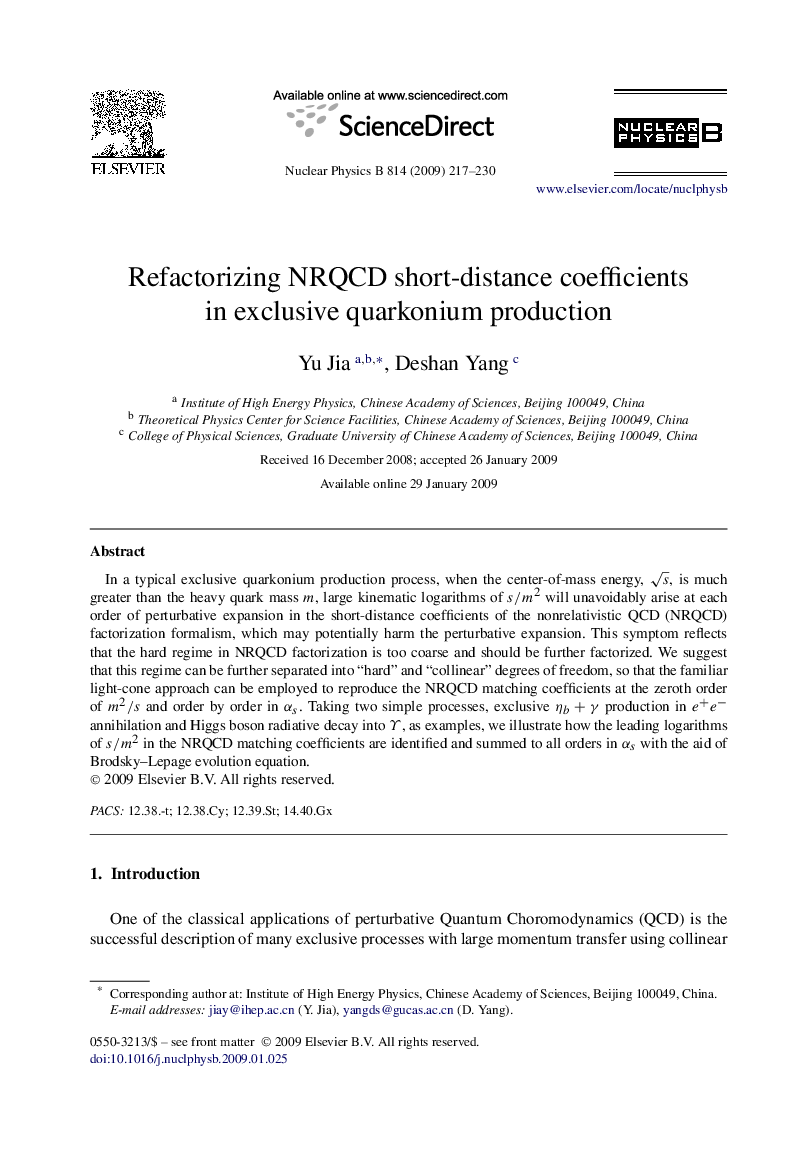| Article ID | Journal | Published Year | Pages | File Type |
|---|---|---|---|---|
| 1844143 | Nuclear Physics B | 2009 | 14 Pages |
In a typical exclusive quarkonium production process, when the center-of-mass energy, s, is much greater than the heavy quark mass m , large kinematic logarithms of s/m2s/m2 will unavoidably arise at each order of perturbative expansion in the short-distance coefficients of the nonrelativistic QCD (NRQCD) factorization formalism, which may potentially harm the perturbative expansion. This symptom reflects that the hard regime in NRQCD factorization is too coarse and should be further factorized. We suggest that this regime can be further separated into “hard” and “collinear” degrees of freedom, so that the familiar light-cone approach can be employed to reproduce the NRQCD matching coefficients at the zeroth order of m2/sm2/s and order by order in αsαs. Taking two simple processes, exclusive ηb+γηb+γ production in e+e−e+e− annihilation and Higgs boson radiative decay into ϒ , as examples, we illustrate how the leading logarithms of s/m2s/m2 in the NRQCD matching coefficients are identified and summed to all orders in αsαs with the aid of Brodsky–Lepage evolution equation.
